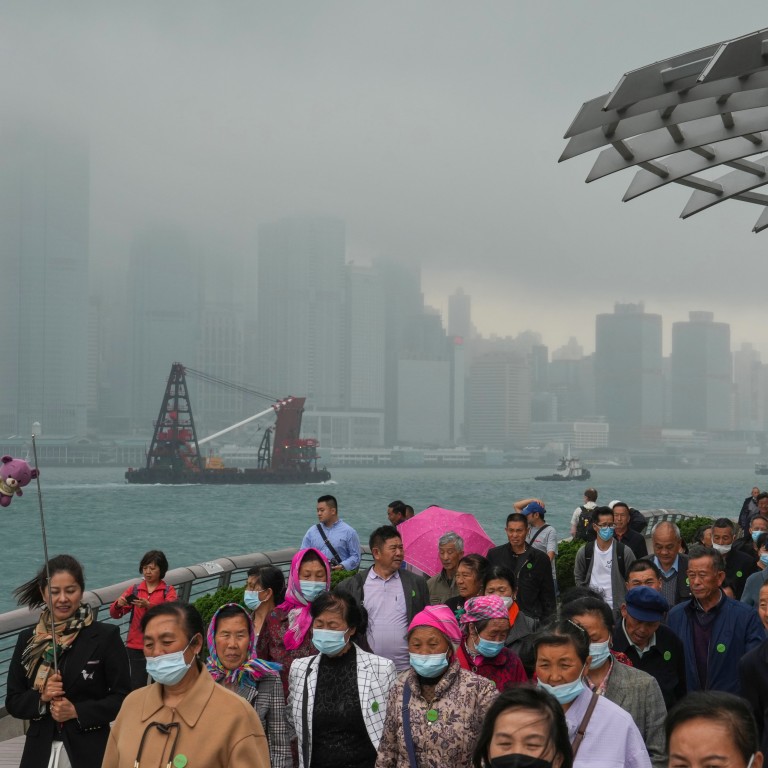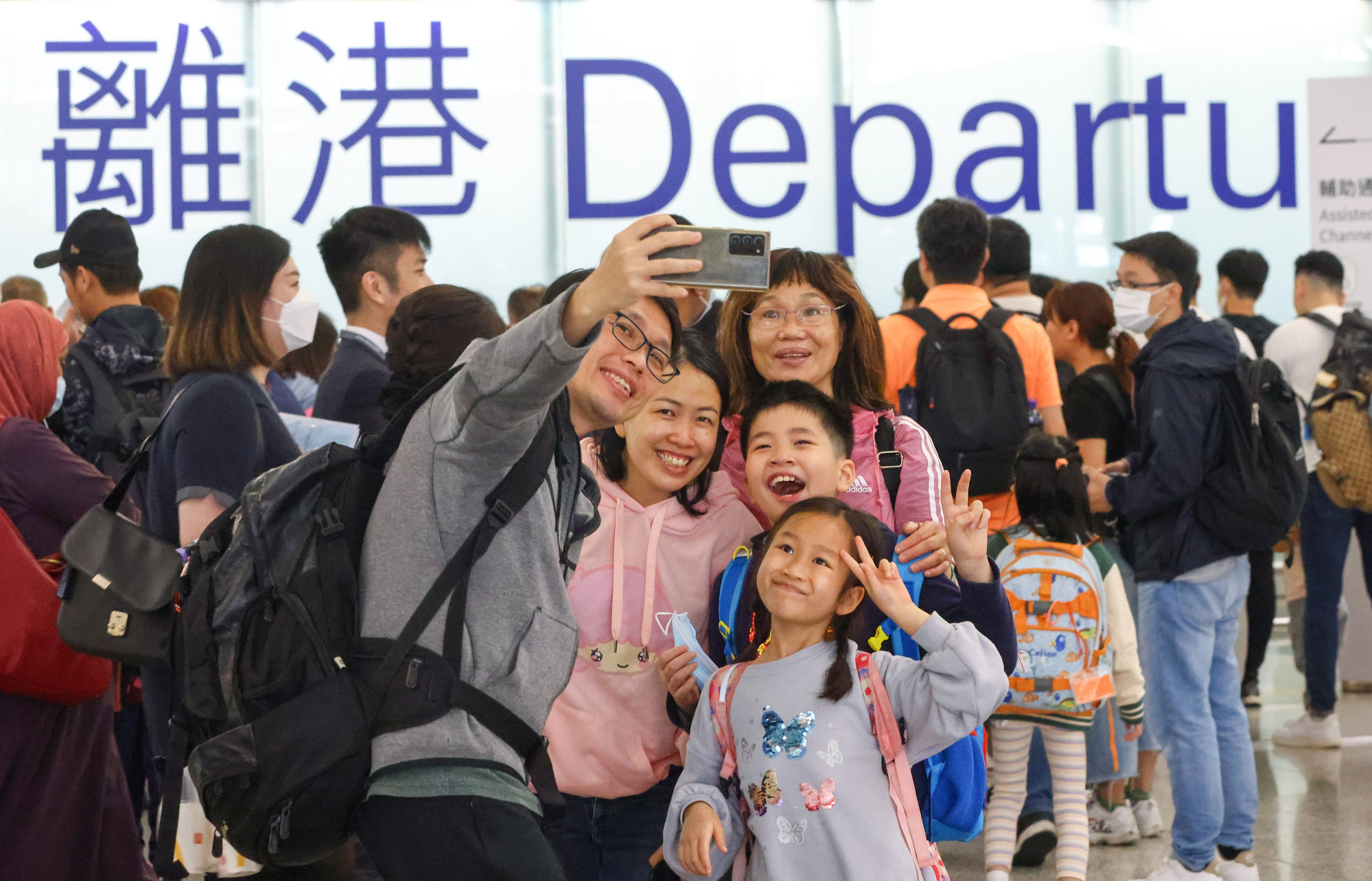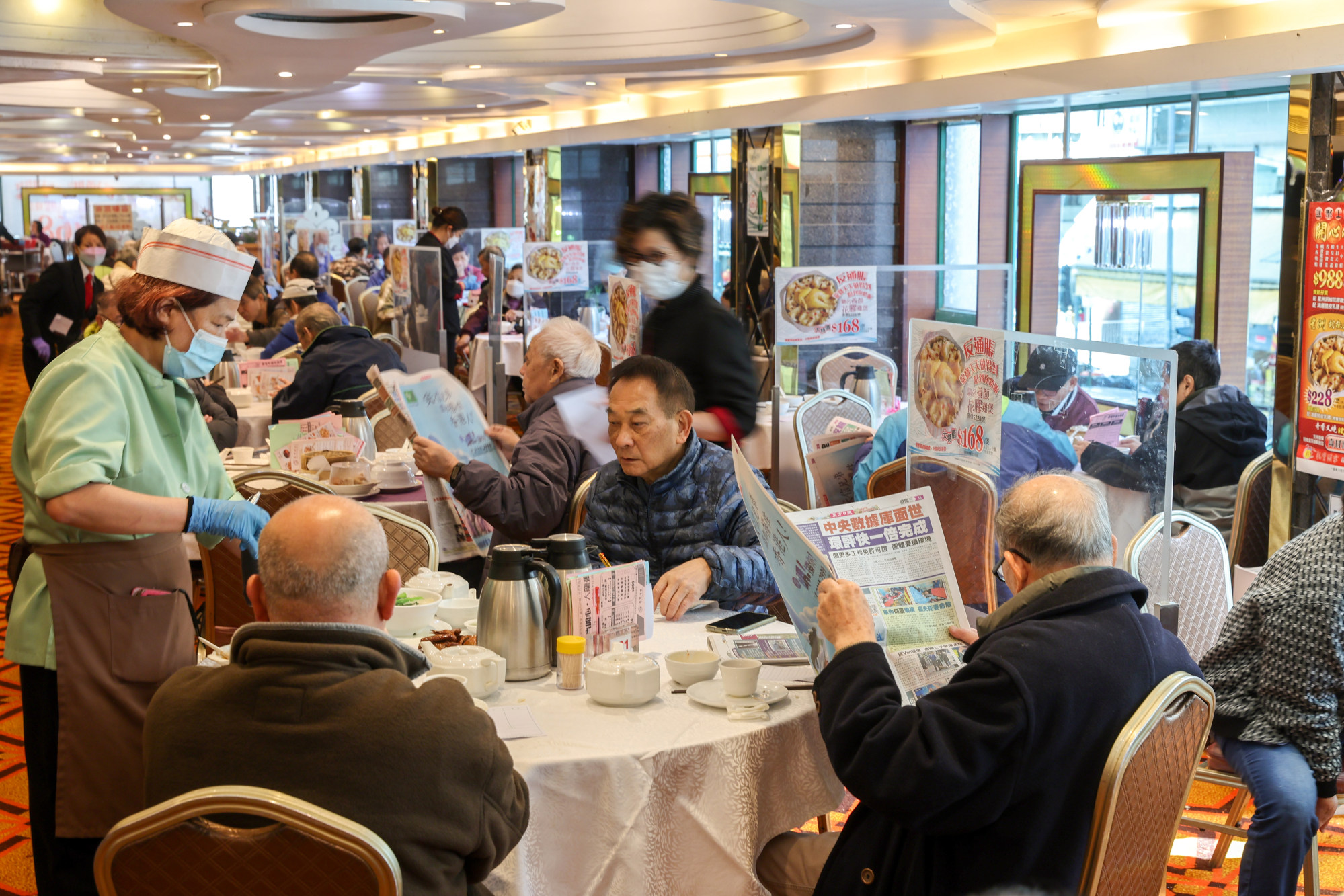
Hong Kong businesses suffer as nearly 860,000 residents leave over Easter holiday
- Catering sector still clawing way back to pre-pandemic levels, with mainland Chinese customers not playing big role over long weekend
- In first three days of Easter break, 858,011 residents headed either across border or overseas, while 245,487 visitors arrived, 77 per cent of whom were from mainland
Hong Kong’s catering sector and many retailers reported sluggish business over the Easter holiday, as official figures showed nearly 860,000 residents left the city and only 245,000 visitors arrived during the first three days of the long weekend.
Industry leaders on Monday said the outflow of people, equal to nearly 12 per cent of the city’s 7.3 million population, had left operators struggling with as much as a 20 per cent drop in business, while only certain types of shops benefited from the return of tourists.
Simon Wong Ka-wo, president of the Hong Kong Federation of Restaurants and Related Trades, estimated that daily revenue in the sector over the Easter weekend fell to between HK$230 million (US$29.3 million) and HK$250 million, down from HK$400 million during the peak season and up to HK$300 million on normal days in the past.
“The decline is actually obvious. After the relaxation of pandemic restrictions [in December], business has actually recovered by 80 to 90 per cent,” he said. “But comparing levels in the past two months, there has been a 15 to 20 per cent decline. The impact is quite large.
“Even during the peak travel season, there may only be an additional 20 to 30 per cent increase in mainland visitors, which is still not enough to reach pre-pandemic levels.”

In the first three days of the Easter break starting on Friday, 858,011 residents headed either across the border or overseas, while 245,487 visitors arrived in the city, 77 per cent of whom were from mainland China, according to immigration statistics reviewed by the Post. Some 56,392 were tourists from other countries or Taiwan.
On the final day of the break, 458,365 people, including returning Hongkongers, had arrived as of 9pm, with 47,229 entering via the airport, 18,060 through pier checkpoints and 393,076 by land crossings.
Andina Boyle, general manager at the Majo Tapas Paella Bar in the SoHo entertainment district in Central, said management had prepared new menus and additional staff to cope with an expected surge in patrons.
Eateries struggle as Hongkongers travel and mainland Chinese visitors stay home
But while Friday was “promising”, overall takings by Sunday were only about 66 per cent of what the restaurant was expecting.
“It was so quiet,” she said. “We had bookings that weren’t showing up.”
Her sentiment was echoed by Brian Marlien, general manager at Meats, a restaurant under the Pirata Group and also in SoHo.
“Nearly a million people left Hong Kong and you can feel it,” Marlien said, although he added the restaurant still performed better than last Easter.
Some operators, however, said business was improving with the return of overseas tourists.

Meraki Hospitality Group co-founder Laura Offe said her two venues, Brazilian-Japanese fusion restaurant Uma Nota and Middle Eastern-themed eatery Bedu in Central, saw a “steady flow of guests during the Easter break”.
“We had some visitors from Australia, Singapore and regular guests who hadn’t been back in three years who dropped by and were glad to see that we were still open,” Offe said.
On the retail front, only certain types of businesses reported an uptick in customers.
“We don’t have hard figures because it’s just a few days after the Easter holiday started,” said Peter Shiu Ka-fai, lawmaker for the wholesale and retail sector. “But shops selling jewellery and dried seafood in tourist areas are doing exceptionally well.”
Lam Chi-chung, general secretary of the Hong Kong Department Store and Commercial Staff General Union, said residents might be waiting for the next round of government consumption vouchers later this month before spending.
Songkran makes a splash in Hong Kong as URA chief vows to save area’s uniqueness
Cheung Tak-wing, vice-chairman of the Hong Kong General Chamber of Pharmacy, who runs stores in Yuen Long and Sheung Wan, said business remained largely unchanged, with most customers being local.
“A lot of people went abroad travelling, so we did not see a significant increase in sales,” Cheung said. “There were some mainland tourists who shopped at our Yuen Long shop, but not a lot of them and we have sufficient inventory.”
Staff at Wing Hop Lung in Mong Kok, a dried seafood shop on Canton Road in Kowloon, described the holiday weekend as “very quiet”.
“We are about 60 per cent down in business compared to 2018 and 2019,” said store manager Hui Sui-fun.
Federation of Hong Kong Hotel Owners executive director Caspar Tsui Ying-wai, who served as secretary for home affairs, said the number of visitors had been rising since the government launched its “Hello Hong Kong” campaign in February to lure tourists.
Hong Kong restaurateurs, hoteliers predict slow business over Easter break
Timothy Chui Ting-pong, executive director of the Hong Kong Tourism Association, said overall occupancy did not go up during the holiday, adding that guests had also been limited by the fewer number of flights to the city compared with before the pandemic.
“Local consumption during Easter is quiet, but it should improve when the consumption vouchers are distributed next week,” Chui said.
According to official statistics released last month, the occupancy rate in January this year was 66 per cent among 319 hotels citywide.
Additional reporting by Wynna Wong



